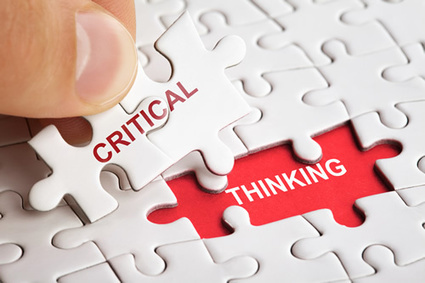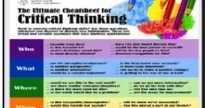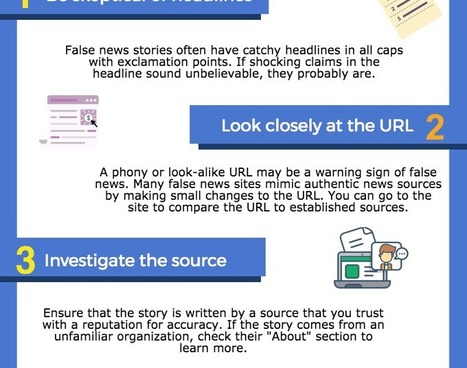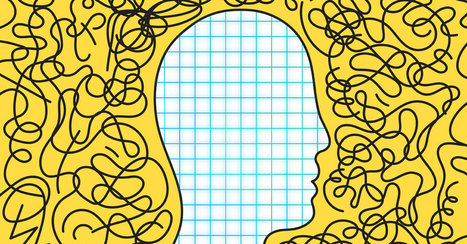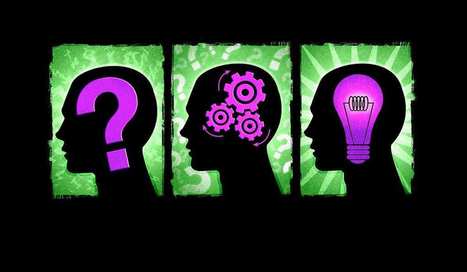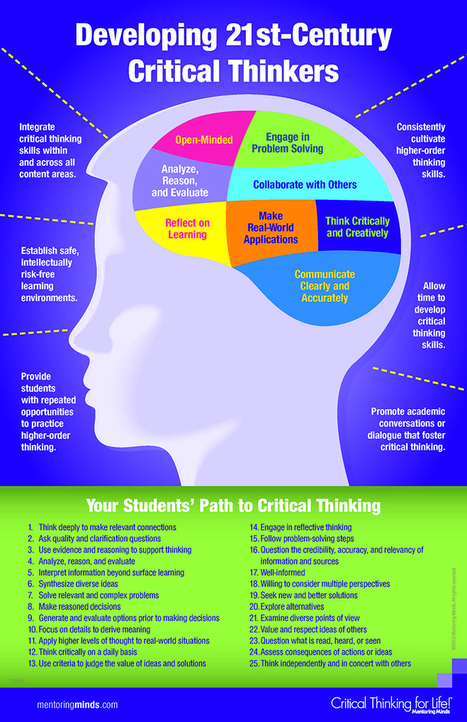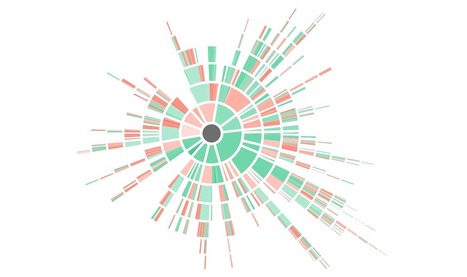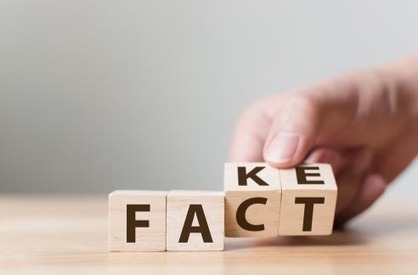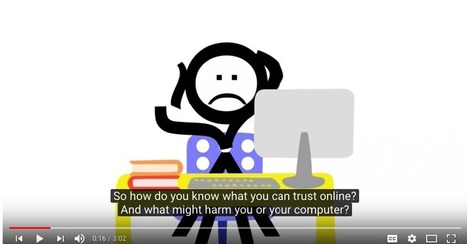 Your new post is loading...
 Your new post is loading...
Visible thinking routines that encourage students to document and share their ideas can have a profound effect on their learning.
Hypothes.is is a great tool for annotating web pages and PDFs. It is premised on the concept of social annotation allowing students to annotate content collaboratively. Collaborative annotation, as stated by Hypothes.is, "makes reading active, visible, and social, enabling students to engage with their texts, teachers, ideas, and each other in deeper, more meaningful ways."
As educators, we often hear about the importance of teaching critical thinking skills to our students. What we hear about less, however, are the most effective techniques for teaching those skills and how teachers can implement them in the classroom—especially now that schools are forced to provide virtual instruction during the COVID-19 pandemic.
Critical thinking is a disruptive cognitive process that explores alternative ways of thinking about something with the purpose of uncovering silent and untold meanings. Critical thinkers do not settle with the obvious and the taken for granted. They always delve into the deep layers of meaning and engage in profound intellectual altercations to formulate a better and holistic understanding. In a world where information obesity is the norm, critical thinking skills become essential survival skills.
As educators, we often hear about the importance of teaching critical thinking skills to our students. What we hear about less, however, are the most effective techniques for teaching those skills …
Prominent scholars say that to produce deeper learning, students need to become accustomed to confusion—and develop the persistence to find their own answers.
By Emily Kaplan
December 11, 2019
A few years ago, a little boy asked me when the world had become colorful.
I asked him what he meant.
Well, he said, anyone can see that when you look around now, everything has color. But in the old days, everything used to be in black and white. So what year did all the colors come?
A few days ago we shared with you a new Google feature that allows you to easily fact check online content. Today, we are sharing with you 10 good tips that will enable you to critically assess the veracity and credibility of online content (e.g. news stories). These are guidelines Facebook Help Centre provided for it users to help them spot fake news. However, these tips can also apply to any other type of content. Students can use them to evaluate digital content and enhance their critical reading comprehension.
What makes people susceptible to fake news and other forms of strategic misinformation? And what, if anything, can be done about it?
These questions have become more urgent in recent years, not least because of revelations about the Russian campaign to influence the 2016 United States presidential election by disseminating propaganda through social media platforms. In general, our political culture seems to be increasingly populated by people who espouse outlandish or demonstrably false claims that often align with their political ideology.
At one time or another we have all engaged in poor thinking habits. After all, nobody’s perfect and neither is anybody’s thinking. However, that doesn’t mean we can’t get better at it and start thinking more critically. It’s worth our time to seek ways of improving our thinking and to guide our learners to do the same.
Poor thinking habits refer to the ways of thinking that produce adverse effects in every part of our lives. They can negatively affect our personal progress, our relationships, and everyone around us. But they do much more than that, actually. Not only do they affect the outside world, but they do damage from within as well. In the long run poor thinking can affect our self-esteem, our ability to cope with challenges, and even our physical health.
We all endorse it and we all want our students to do it. We also claim to teach it. “It” is critical thinking, and very few of us actually teach it or even understand what it is (Paul & Elder, 2013). Research tells us that our students learn critical thinking only after we receive training in how to teach it and design our courses explicitly and intentionally to foster critical thinking skills (Abrami, Bernard, Borokhovski, Wade, Surkes, Tamim, & Zhang, 2008). We have to start by formulating assessable critical thinking learning outcomes and building our courses around them.
Having students present the arguments in a law case gives them a context for developing reading, writing, and critical thinking skills. The courtroom is breathless as the state’s attorney rises to present her opening statement in the case of Chris Archer v. New Columbia. Jury members sit at attention, listening to the argument that the defendant, Chris Archer, should be tried for first-degree murder and criminal hazing in the death of fraternity pledge Milan Jackson.
Teachers strive to help learners find their own answers by doing one thing—giving them the skills to do so. Although this seems like a tall order, in reality it’s simpler than you think. Part of it resides in ensuring students know they have options for this.
Exploring these options is the essence of philosophy of 3B4ME. If you haven’t heard of it, we discovered it on Adam Schoenbart’s blog. It’s an ingenious way to help learners find their own answers using simple paths to discovery.
If you’re teaching your learners to develop their critical thinking skills (you are, aren’t you?), they could likely use some visual aids to guide them. That said, we’ve looked around and found some pretty useful critical thinking flowcharts that we think you’ll enjoy.
The following critical thinking flowcharts are easily digestible in terms of how they describe various thinking processes. All in all they are really useful resources for your kids to add to their practices.
|
The YouVerify project (I think this project part of Savoir Devenir) funded by the European Union and based in France, has launched the MOOC: Disinformation Step by Step, which starts on Monday 15 November 2021 and lasts a month. It will be given in three languages: French, Spanish and English and is aimed at a wide range of people including educators, students, journalists, librarians, youth workers. Being a MOOC, it is open and free and you can get a digital badge on completion. It has 6 modules: critical thinking, Media and Information Literacy (MIL), disinformation, verification, refutation and building MIL projects. There is a particular focus on visual disinformation. It is led by MIL expert Professor Davina Frau-Meigs. Register here: https://hub5.eco-learning.eu/course/disinformation-step-by-step/
As “research it yourself” becomes a rallying cry for promoters of outlandish conspiracy theories with real-world consequences, educators need to think hard about what’s missing from their information literacy efforts.
Individuals vary in their views of what students should be taught. How should teachers discuss the misdeeds of a nation’s founders? What is the minimum accomplishment expected of each student in mathematics? But there is no disagreement on the importance of critical thinking skills. In free societies, the ability to think critically is viewed as a cornerstone of individual civic engagement and economic success.
But is there evidence that explicitly teaching critical thinking brings any benefit? There is, and such evidence is available for different subject matters. For example, in one experiment researchers taught college students principles for evaluating evidence in psychology studies – principles like the difference between correlational research and true experiments (Bensley and Spero, 2014). These principles were incorporated into regular instruction in a psychology class, and their application was practised in that context. Compared to a control group that learned principles of memory, students who learned the critical thinking principles performed better on a test that required evaluation of psychology evidence.
There is much that has been said throughout the centuries in praise of critical thinking. The methodology named after Greek philosopher Socrates—the Socratic method—is one of the earliest critical thinking instruction tools known to man. Centuries later, Roman Emperor Marcus “The Philosopher” Aurelius would warn in his meditations that, “Everything we hear is an opinion, not a fact; everything we see is a perspective, not the truth.” Fast forward past Galileo, W. E. B. Du Bois, Albert Einstein, Bertrand Russell, Martin Luther King Jr., and countless others, and we discover that the practice of extolling the benefits of critical thinking is literally thousands of years old. So what is it that makes it such an honoured skill set? In what ways does critical thinking truly benefit us? ?
Kialo is a free tool used by educators world-wide to teach critical thinking, facilitate rational classroom debate and explain controversial issues.
Keeping up with national and international events was a lot easier when all the news came from one of three major TV news outlets and a few newspapers like The New York Times. Now, there are dozens of channels, hundreds of newspapers, thousands of bloggers, and tens of thousands of social media journalists -- all trying to get your attention with the latest apocalyptic news flash. Stories based on gossip as much as fact used to be designated yellow journalism. Now, in what has been called a post-truth society (defined by Oxford Dictionary as “Relating to or denoting circumstances in which objective facts are less influential in shaping public opinion than appeals to emotion and personal belief"), it is the reader's responsibility to differentiate between fact and fake news. Here we will look at some teaching strategies to help you do just that.
Independent critical thinking skills are among the top skills educators strive to give to their students. That’s because when we succeed at getting learners thinking independently, we’ve given them a gift for life. Once school is over they can then go into future enterprises and pursuits with confidence and pride. After all, they have the tools to make their own choices that were nurtured by amazing teachers like you.
In today’s post we are sharing with you four oldei but goodie YouTube videos to help you teach your students how to navigate the web smartly. As good digital citizens, students need to be educated on the fundamentals behind a responsible and effective use of the Internet. This includes knowledge of how to avoid falling prey to online scams (phishing, identity theft, fraud, etc) and how to act in case they happen; how to appropriately use online content; what or what not to share publicly; how to protect private information (e.g, home address, phone number, email etc); and how to act in an ethical, responsible and positive way online (and of course offline). Critical literacy is key in the teaching of digital citizenship. It equips students with a critical mindset capable of investigating, scrutinizing, and analyzing digital content from different perspectives. In this context, the videos we have for you today are important contribution to your efforts to raise digitally cognizant students.
Auberry, K. (2018). Increasing students’ ability to identify fake news through information literacy education and content managemen
Education scholars say youth are duped by sponsored content and don't always recognize political bias of social messages.
When it comes to evaluating information that flows across social channels or pops up in a Google search, young and otherwise digital-savvy students can easily be duped, finds a new report from researchers at Stanford Graduate School of Education.
The report, released this week by the Stanford History Education Group (SHEG), shows a dismaying inability by students to reason about information they see on the Internet, the authors said. Students, for example, had a hard time distinguishing advertisements from news articles or identifying where information came from.
Like anything else that you’d like to see happen in your classroom, promoting critical thinking skills is a matter of planning and priority.
While teachers are often admonished to push students towards higher-level thinking activities, beyond Bloom’s Taxonomy (or one of TeachThought’s own learning taxonomies), there are precious few models and frameworks that are accessible, comprehensive, or universal enough to be used on a daily basis.
|

 Your new post is loading...
Your new post is loading...
 Your new post is loading...
Your new post is loading...






